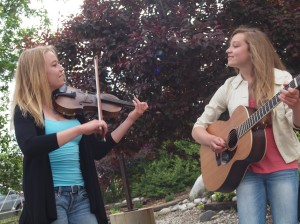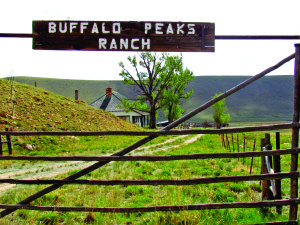by Bill Hatcher
“In Colorado, the outdoors is what’s for dinner!”
That’s Sherry Ellms, Professor of Environmental Studies at Naropa University in Boulder. I had asked her what motorized recreation says about American Culture. And while playful, her dining metaphor belies our tendency to “consume” nature.
In 1991, 11,700 OHVs (off-highway vehicles, such as dirt bikes, jeeps and all-terrain vehicles, or ATVs) were registered in Colorado. By 2012, that number had grown to over 160,000.
Andrew Archuleta is the San Luis Valley Field Manager for the Bureau of Land Management (BLM). He identifies two reasons motorized recreation has increased on public lands. “One is improved technology and ease of use. The other is the aging baby-boomer population, reaching the age of not wanting to hike anymore … but still wanting to get outdoors.” Andrew agrees that ATVs might remind people of when they were young and carefree, driving go-carts. At the same time, they irritate non-motorized users. In addition to noise and fumes, “… the complaints we get are ATVs going off-road, creating erosion, user-created roads and impacting cultural sites.”
Bill Sustrich, 87, has lived in Colorado since 1949. He has always hunted and still loves to walk in the mountains. In his experience, OHVs are used “Illegally as hell! … Once, I hiked in two miles to find a place to hunt. I sat down, quiet. And pretty soon I heard putt, putt, putt. [The rider] was almost as big as his damn machine, driving over logs and everything. He drove right up to me and said, ‘Have you seen anything?’ I felt like shooting the son of a bitch.” Bill recalls many times when people on OHVs ruined his hunts. “I don’t think [OHVs] belong in the backcountry at all.”
The Quiet Use Coalition is a nonprofit organization based in Salida whose mission is to preserve and promote the quiet use of public lands. It has over 300 members of all ages. Tom Sobal, 57, is a QUC member. He says the reason OHVs have proliferated is simple: “We are a motorized society … [however] easier is not always better. And some of it is just the obesity problem.”
A blurb in High Country News (September 2011) concurs: outdoor retailers are increasingly “marketing to the inactivity of America, paying particular attention to the portly and non-athletic beached white male.” Americans want “soft, rugged adventures.”
Nearly two-thirds of Americans are overweight or obese. Exciting ATV ads inspire the unfit majority to purchase control over their lives. ATVs and UTVs (utility task vehicles, also called side-by-sides) cost up to $15,000 – before accessories, apparel and a trailer (and a vehicle big enough to haul everything). A family of four can easily spend over $50,000 investing in what Tom calls “a form of luxury recreation.”
Locally, TRVs (two-rider, tandem vehicles) are the most popular sellers at Arctic Cat – Timberline Motorsports in Buena Vista. Each costs around $10,000. Most of their clients are over 50, 95% of whom are men. All Season Adventures, Inc. of Salida gives similar statistics for their rental tours, except many clients are families with children, and 75 percent come from other states.
Wendell Alumbaugh, 74, is a member and past president of High Rocky Riders, an OHV club in Buena Vista. The club is dedicated to family-oriented motorized recreation, which Wendell describes as, “group rides, picnics and events. Our main event is the Colorado Historical ATV Color Tour,” an annual event hosted by the Buena Vista Chamber of Commerce to raise money for the chamber and local charities. The club has 319 members, and its average age is 70. Wendell agrees with Andrew Archuleta on one point. “[OHV] use is increasing because the population is getting older. They have artificial hips, artificial knees and arthritis.”
Regarding handicapped riders, Wendell says, “I have more titanium in my left leg than you can imagine. And if I wasn’t able to ride my ATVs … I think I’d just sit down in a chair and die.”
But Tom Sobal is dubious. “I don’t understand the appeal of ATVs to handicapped people. Most ATV access is on [Forest Service and BLM] roads, which you could do in a regular vehicle, which is safer and more comfortable.”
Sherry Ellms’s opinion is evenhanded. “I realize motorized vehicles are taking people to natural spots who could never have gotten there otherwise … So then I guess it’s, how are we doing it? Are we paying attention to Earth itself when we’re doing that?”
I pose this question to an anonymous third-generation Coloradan. He’s in his 50s and enjoys hunting. “When I reach that point in life, I won’t go [into the backcountry] anymore. I don’t think other people and wildlife should have to suffer for me. I respect the place too much, and that would just be selfish.”
His comment makes me wonder if High Rocky Riders could ride on private land. “All-terrain parks are available,” says Wendell, “but not so much in this part of the country. We ride almost 100% on public land, [including] the Fourmile Area.” The Fourmile Travel Management Area is located east of Buena Vista. “We never have seen a hiker out there, but it’s open to hikers. Everything is open to hikers … Hundreds of thousands of acres of Wilderness that I cannot go into.”
Motorized vehicles, bicycles and even chainsaws are prohibited in federally designated Wilderness. Colorado contains 41 such areas, totaling 3.3 million acres. It’s a lot of room, but it pales in comparison to the state’s 23 million acres of National Forest and BLM, which are laced with roads. The most extensive roadless area in Colorado is the Weminuche Wilderness. But even there, one is never more than 10 miles from the nearest road.
In Sobal’s opinion, the use of any motorized vehicle is a high-impact activity. And while he recognizes that people ride to relieve stress and appreciate scenery, “The primary focus of [OHV users] is not really to experience nature, [but to] get pleasure from moving quickly on a machine …”
Wendell’s view of QUC and similar groups is equally jaded. “In large part, they’re young, they’re idealistic, and they’re very involved in ecological movements. They’re also often selfish in that they want it all for themselves.” I ask if motorized recreation erodes the quality of nature. “The land is so vast,” he says, “[there are] many thousands of acres that no one ever sees. Because it’s beyond what can be hiked. No one’s there. No one ever sees it. So would it be so bad if that was made available to motorized users?”
Good or bad, OHVs are often associated with dominating behaviors. Ads show riders “tearing it up” in streams or forests – what psychologists call archetypal “feminine” landscapes. In this way, riders assert their masculinity and “conquer” places that represent their inner feminine, regardless of one’s sex. For example, one UTV manufacturer emblazons a certain model with images of green flames and the Grim Reaper, labeling it the “Green Reaper.”
Sherry takes the middle road. “I think the landscape is a reflection of our own psyche … [and] motorized recreation is a more masculine way to experience nature. The masculine controls. It’s the logic. It’s the reason and rationality. And we need that! But we’ve gotten out of balance.” She adds, “It can’t be either/or … This is how we’ve gotten to the fix we’re in. It’s got to come from our heart connection, our true nature of being in nature. That’s where the action is.”
As a non-mechanical child, Bill Hatcher was never able to get his go-cart running with a Briggs & Stratton lawnmower engine. (billhatcherbooks.com)



